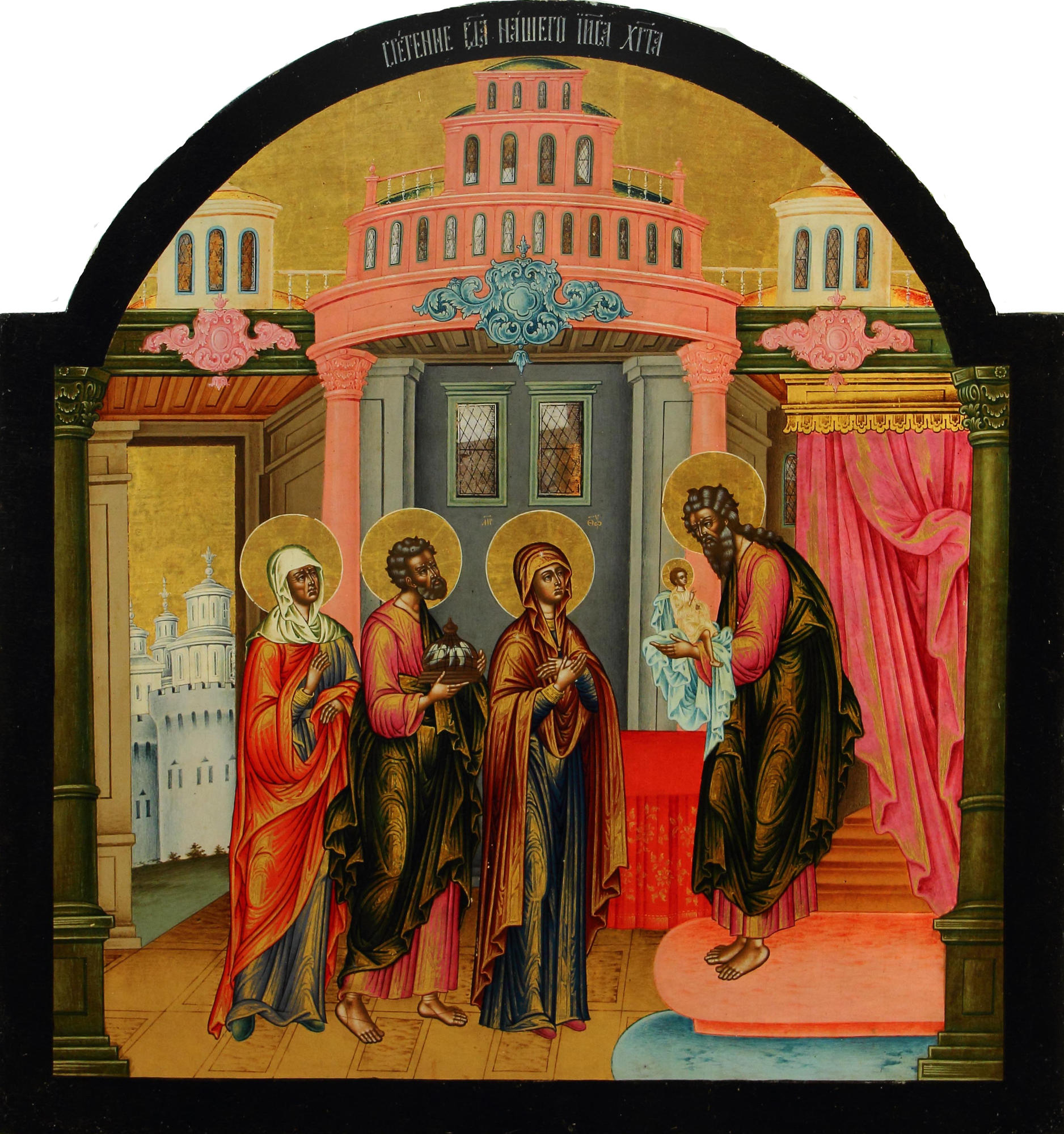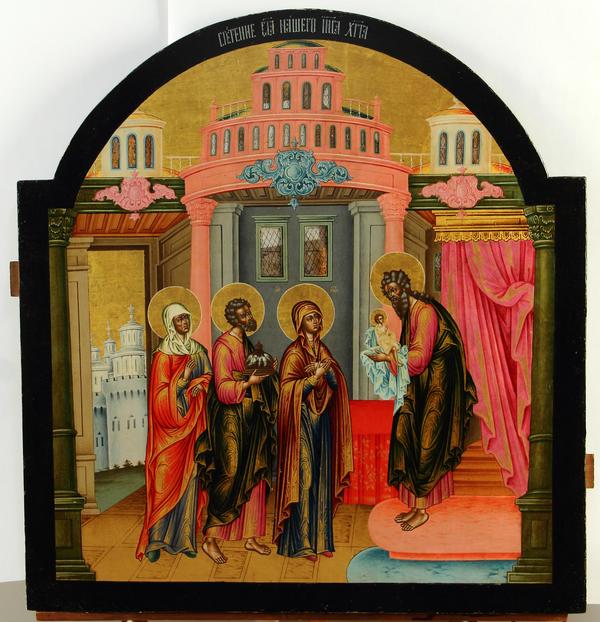The Meeting of Our Lord or the Presentation at the Temple is one of the twelve Great Feasts in Christianity. Under the God-given Law of Moses, parents were required to bring their first-born sons to be dedicated to God. Forty days after the Nativity of Christ, the Theotokos and Joseph entered the Temple with the Infant Jesus. They also gave the sacrificial animals – young pigeons – to the clergy. The Holy Family was met by an elder, Simeon the God-Receiver. At that time, an elderly righteous widow, Anna the Prophetess was also present in the Temple. This plot formed the basis of the iconography of the Meeting of Our Lord.
1 / 2
the Meeting of Our Lord
Creation period
End of the 18th - first third of the 19th c.
Dimensions
69x55.2 cm
Technique
Wood, tempera
Collection
Exhibition
1
Open in app#1
Unknown Author
the Meeting of Our Lord
#2
#3
About icon
#4
The icon from the collection of the Rybinsk Museum Reserve was created in the late 18th – early 19th century. The image contains many elements of the so-called Romanov iconography: the type of dark faces, regular architectural forms, bright, pure colours. Here you can also see some other frequent details of the Romanov style icons: ledges with openwork edging, coloured sculptural panels with monograms – cartouches, latticed double windows with silver glass.
#5
The icon has many things in common with the outline icon example (tracing) of the same scene by Fyodor Kalashnikov. That master was a student of Maxim Arkhipovsky, the founder of the influential dynasty of Romanov iconographers. Fyodor Kalashnikov was commissioned by the Church and created icons for the St. Nicholas Cathedral in Rybinsk.
The icon was painted on a wooden board with an ornately shaped semicircular top. The boards were polished, covered with pavoloka - a thin canvas cloth and several layers of levkas (primer), that was made of gelatin-like glue mass and chalk. The main image was painted with tempera. These paints consisted of powder ground pigments mixed with raw egg yolks. The pigments were used both local and imported. For example, ochre was made of a mixture of clay and rust, red and crimson were made on the basis of the mercuric mineral of cinnabar, and a blue pigment was made of Greek lazurite.
The artist covered the illuminated areas of the clothing and haloes with the gold paint, which contained particles of this precious metal. The finished image was coated with varnish - boiled linseed oil. It hardened quickly in the air and protected the icon from scratches. The varnish has darkened over time, absorbing the soot of candles and dust. In 2014, the museum staff managed to restore the icon to its original look.
The icon was painted on a wooden board with an ornately shaped semicircular top. The boards were polished, covered with pavoloka - a thin canvas cloth and several layers of levkas (primer), that was made of gelatin-like glue mass and chalk. The main image was painted with tempera. These paints consisted of powder ground pigments mixed with raw egg yolks. The pigments were used both local and imported. For example, ochre was made of a mixture of clay and rust, red and crimson were made on the basis of the mercuric mineral of cinnabar, and a blue pigment was made of Greek lazurite.
The artist covered the illuminated areas of the clothing and haloes with the gold paint, which contained particles of this precious metal. The finished image was coated with varnish - boiled linseed oil. It hardened quickly in the air and protected the icon from scratches. The varnish has darkened over time, absorbing the soot of candles and dust. In 2014, the museum staff managed to restore the icon to its original look.
#6
Rybinsk Museum Reserve
read morehide
00:00
00:00
1x
the Meeting of Our Lord
Creation period
End of the 18th - first third of the 19th c.
Dimensions
69x55.2 cm
Technique
Wood, tempera
Collection
Exhibition
1
Open in app
Share




